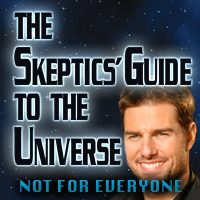 It is always a thrilling time for scolars when a piece of art turns up that has been hidden (sic) in a private collection.
It is always a thrilling time for scolars when a piece of art turns up that has been hidden (sic) in a private collection.The owners sent it to the
The most fascinating bit of this is that it is a tuchlein. Tuchlein has for a great deal been ignored by scolars because of the rarety and lack of research to build upon.
I am always sceptical when it comes to linking pieces to 'the big names'. Especially when works are autographed.
The provenance of the work is always the trickiest bit. It is all too tempting to identify existing works with works mentioned in sources only on the grounds of an identical or related subject. Referring to old texts to make a pedigree more impressive and link a work to Brueghel are very very tempting.
We also know Breugel (the Elder) had the habit of painting the same subject a number of times in different versions. Different versions even were even part of the same collection. For instance, Jean Noiret owned two versions of the Wedding and Fair. Kaiser Rudolf II owned two versions of Calvary and Babel.
So I hope the Museo del Prado did their homework on this one.
 They reference a painting in the Museum of Fine Arts in Brussels [Inv. 10818, sold in Paris at the Petit Gallery on June 10, 1904 (sale Fontaine-Flament, no. 12, reprod. Bastelaer and Hulin de Loo, 1907, cat. A-32). In 1905 work was owned by Marie Croquison of Courtrai, who in 1933 donated it to his nephew Dr. Frans Heulens, which in turn donated it in 1988 at the Musées Royaux des Beaux-Arts in Brussels.] and another fragment in the Kunsthistorisches Museum in Vienna (cat. 728 A, which is no longer attributed to Brueghel the Younger, and is mentioned in passing as not being completely watertight but could have been fashioned after a model -perhaps taken from this one, or used the same).
They reference a painting in the Museum of Fine Arts in Brussels [Inv. 10818, sold in Paris at the Petit Gallery on June 10, 1904 (sale Fontaine-Flament, no. 12, reprod. Bastelaer and Hulin de Loo, 1907, cat. A-32). In 1905 work was owned by Marie Croquison of Courtrai, who in 1933 donated it to his nephew Dr. Frans Heulens, which in turn donated it in 1988 at the Musées Royaux des Beaux-Arts in Brussels.] and another fragment in the Kunsthistorisches Museum in Vienna (cat. 728 A, which is no longer attributed to Brueghel the Younger, and is mentioned in passing as not being completely watertight but could have been fashioned after a model -perhaps taken from this one, or used the same).  They do not mention a version of the Sint Maartensfeest painted by Pieter Balten (which is now in the Museum of Fine Arts in Antwerp). There is mention of the same subject (drawing) in the Musée Atger, Montpellier. Or another copy in the Rijksmuseum, Amsterdam (nr. 425). Engraved by N. Guerard (1648-1719).
They do not mention a version of the Sint Maartensfeest painted by Pieter Balten (which is now in the Museum of Fine Arts in Antwerp). There is mention of the same subject (drawing) in the Musée Atger, Montpellier. Or another copy in the Rijksmuseum, Amsterdam (nr. 425). Engraved by N. Guerard (1648-1719).
Although I have my doubts about the attribution of the work to Balten (or indeed his workshop), because there is another version of the Feast in the Rijksmuseum also attributed to Balten, which does look entirely different.
The relationship between Balten and Brueghel is, however, more complicated. In 1551 they collaborated on an altarpiece (destr.) for the Mechelen Glovemakers. Balten's other works, for example the Ecce homo (Fine Arts Antwerp), reveal that the two artists were closely associated: a group from the Ecce homo reappears as an independent painting (Brussels, A. de Heuvel priv. col.) by Brueghel’s son and imitator Pieter Brueghel the younger.
It is also worth noting that the horseback figure on the Feast reappears several times in the Cavalry by Balten sold at Christie's in July 2005 (lot nr 7).
Comparing these compositions could yield even more information about a work we have thought to be lost for so long.
On a related note I would like to recommend
x-posted from



No comments:
Post a Comment